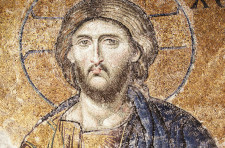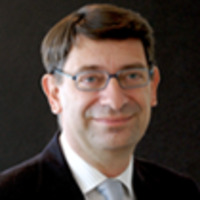The Global Migrations of Ornamental Plants
Plants migrate across the globe by hitching rides on exported building materials, riding as seeds in the entrails of animals, stowing away in the luggage of plant-loving travelers, or simply floating on wind that sweeps across continents. Author-neurologist Judith M. Taylor not only traced the migratory movements of numerous plants but also introduced botany’s earliest explorers, collectors, and researchers at the Institute’s 2012 annual dinner on November 9.
After noticing that geraniums, begonias, and petunias abound in gardens worldwide, Taylor wondered how that had happened. She decided to examine a standard horticulture encyclopedia with 15,000 entries. “I turned it into a database,” Taylor said, “listing the name of the plant and where it came from. Leaving aside hybrids, the encyclopedia contained about 6,000 species of plants.” The beauty of this approach was that it covered plants likely to be grown in ordinary people’s gardens.
The database showed that “a majority of plants grown in this country are of foreign or exotic extraction,” says Taylor. “It’s an application of statistics not widely used in horticulture.” About 29% of plants come from Asia; 18% from Europe; 17% from North America; 11% from Africa; 9% from South America; 5% from Mexico; and 4% from Australia. The crossover seemed to have been complete by the 1870s, according to Taylor’s maps and statistics. Many plants originated in unexpected locations: roses in China, for example, spreading to Turkey and Iran and eventually, to Italy, where three towns specialized in growing them. The wallflower is associated with England but originated in France. Taylor traced the wallflower to building materials exported from Normandy to Dover, where imported stones were used to build fortresses and castles. “Everybody thinks the tulip is Dutch, but many originated in Russia and the Crimea,” says Taylor. “Greece, Turkey, and the Greek islands were primary sources.” Gradually, tulips spread westward and flourished in Holland because of the flat land, excellent soil, and climate.
Early plant collectors were explorers, adventurers, and couriers for governments and businesses. William Dampier (1651-1715) was a scholarly Englishman of high birth. He became a maritime explorer and started plundering ships on the high seas, eventually earning the sobriquet “the pirate with the exquisite mind.” In 1699, Dampier sailed down the west coast of Australia, where he was the first European to go ashore. He took the Dampiera, the Wildampia, and a gorgeous red Sturt’s pea back to England, where the actual specimens are still in existence, in the botanical museum at Oxford. He became so respected that his portrait hangs in the National Portrait Gallery in London.
For years, Francis Masson (1741-1805) collected bulbs in South Africa and sent them back to the Horticulture Society of London. Masson carefully packed the bulbs, but invariably some died during long months at sea. Throughout the late 1700s, seafaring was a hazardous undertaking, and most plants transported as cargo died en route.
London dentist and amateur botanist Nathaniel Ward (1791-1868) cultivated ferns. To protect his beloved plants from dirty city air, he built a glass-sided box, soon known as the “Wardian Case.” Built in large numbers, these cases solved the plant mortality problem. “After 1830, these plants survived in large numbers,” says Taylor. “The glass sides allowed sunlight to enter the case. Moisture enclosed at the outset, continued to condense and recirculate without evaporating.”
Scotsman Robert Fortune (1812-1880) collected plants in China while employed by the East India Company. He found plants in Shanghai nurseries and private gardens, but he preferred hunting them in the wild. In 1858, the U.S. government sent Fortune to China to collect tea plants. Fortune sent numerous tea plants to the patent office in Washington D.C., but the federal government never established tea as an American crop.
Because plants have traveled ever since the wind has blown, animals have trodden, and people have ridden, the English cottage garden is now a multiethnic melting pot. And because of Taylor’s database, we also know the exotic ancestry of every plant in that melting pot.
—Elizabeth Nakahara




